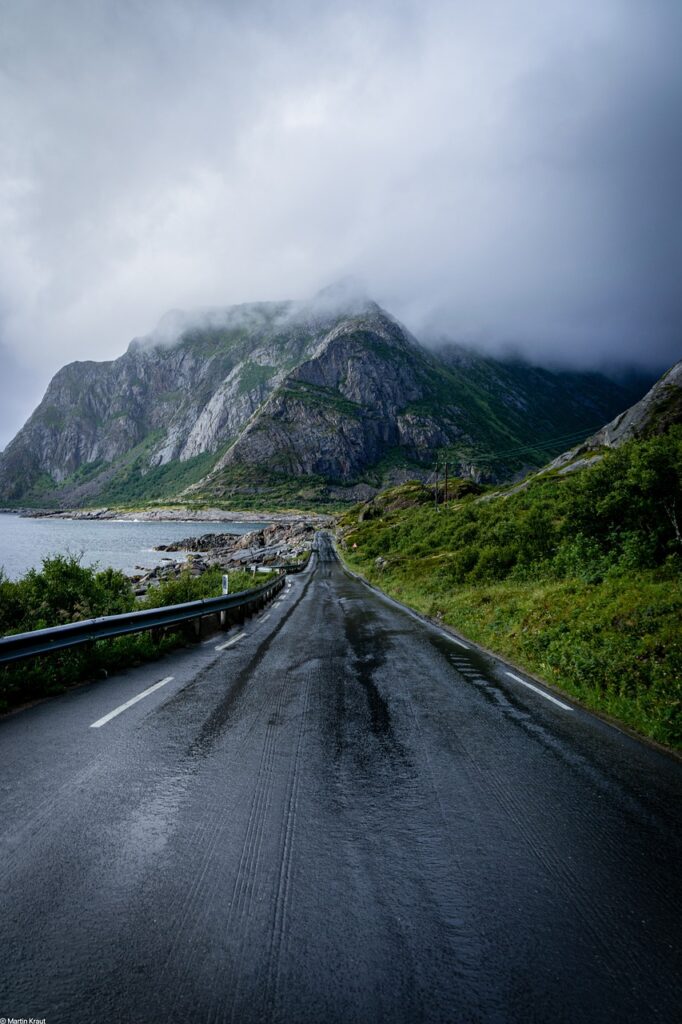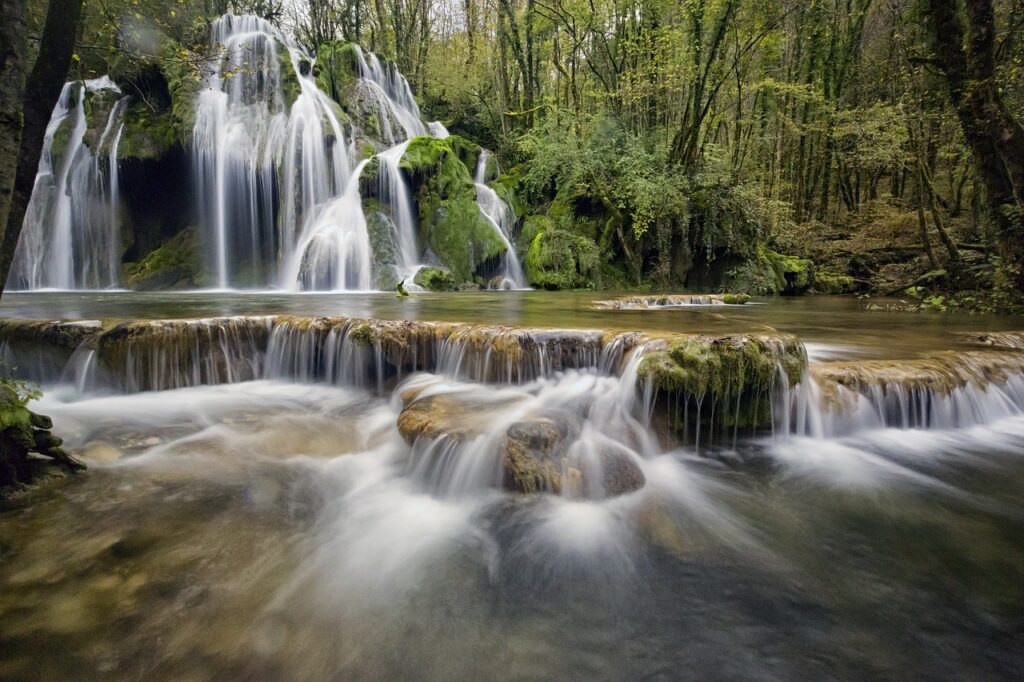Nestled in the Garhwal Himalayas, Mussoorie is a quaint hill station that has long been known as “The Queen of Hills.” With its mist-covered mountains, lush green valleys, and colonial-era charm, Mussoorie offers a serene escape from the hustle and bustle of city life. Whether you’re a nature enthusiast, history buff, or adventure seeker, this enchanting town has something to offer everyone. In this comprehensive guide, we’ll delve into Mussoorie’s rich history, explore its top attractions, uncover hidden gems, and provide practical travel tips to make your visit truly unforgettable.

A Glimpse into Mussoorie’s History
Mussoorie’s history dates back to the early 19th century when it was established by the British as a summer retreat. The town’s name is derived from the Mansur shrub, which is native to the area. Before the British arrived, the region was primarily inhabited by the pastoral community of the Jaunsar-Bawar tribe.
In 1823, Captain Frederick Young, an officer in the British East India Company, built the first British home in Mussoorie. He is often credited with founding the town and promoting its development as a hill station. The cool climate and scenic beauty quickly made Mussoorie a popular destination for British officers and their families. Over time, it became a bustling resort town with a distinct colonial character, evident in its architecture, churches, and educational institutions.
Table of Contents
Exploring the Top Attractions in Mussoorie
Mussoorie’s charm lies in its ability to cater to a wide range of interests. Whether you’re looking for a peaceful retreat or an action-packed adventure, the town has it all. Here are some of the must-visit attractions in Mussoorie:

1. Mall Road
Mall Road is the heart of Mussoorie, bustling with activity day and night. This iconic stretch is lined with shops, restaurants, and cafes, making it the perfect place to soak in the town’s vibrant atmosphere. The road offers stunning views of the Doon Valley on one side and the Himalayas on the other. Walking along Mall Road, you’ll come across colonial-era buildings, souvenir shops, and street vendors selling local delicacies like hot momos and roasted corn.
2. Gun Hill
Gun Hill is the second-highest peak in Mussoorie, offering panoramic views of the surrounding mountains and valleys. To reach the summit, you can either take a cable car ride or hike up a steep but rewarding path. The hill got its name from a British cannon that was once placed here to alert the town’s residents of the time. Today, Gun Hill is a popular spot for photography, with telescopes available for a closer look at the distant Himalayan peaks.

3. Kempty Falls
Kempty Falls is one of the most popular tourist spots in Mussoorie, and for good reason. Cascading down from a height of 40 feet, the waterfall creates a picturesque scene as it plunges into a pool below. Surrounded by lush greenery, Kempty Falls is an ideal spot for picnics, swimming, or simply relaxing by the water. The falls are best visited during the monsoon season when they are at their most majestic.
4. Lal Tibba
Lal Tibba, meaning “Red Hill,” is the highest point in Mussoorie, standing at an altitude of 2,275 meters. This vantage point offers breathtaking views of the snow-capped peaks of the Himalayas, including Nanda Devi, Kedarnath, and Badrinath. Lal Tibba is also home to an old British-era telegraph station and a small cafe where you can enjoy a cup of hot tea while taking in the stunning vistas.

5. Mussoorie Lake
Located about 6 kilometers from the main town, Mussoorie Lake is a man-made reservoir surrounded by scenic hills. The lake offers boating facilities and is a popular spot for families and couples looking to enjoy a peaceful day out. The serene ambiance and the cool breeze make it a perfect place to relax and unwind. There are also several eateries around the lake where you can savor local snacks and drinks.
6. Camel’s Back Road
Camel’s Back Road is a 3-kilometer-long stretch that gets its name from a rock formation that resembles the hump of a camel. This scenic pathway is ideal for a leisurely stroll or a horse ride, with beautiful views of the Doon Valley and the surrounding hills. The road is lined with tall deodar trees, adding to its tranquil charm. It’s also a great spot to watch the sunset and enjoy the cool evening breeze.

7. Cloud’s End
As the name suggests, Cloud’s End is the farthest point of Mussoorie, offering a sense of seclusion and tranquility. Located about 7 kilometers from the town center, this area is surrounded by dense forests of oak and deodar trees. The British-built Cloud’s End bungalow, now a heritage hotel, marks the beginning of this region. Visitors can enjoy breathtaking views, nature walks, and birdwatching in this serene environment.
Offbeat Experiences and Hidden Gems
While Mussoorie’s popular attractions are undeniably captivating, there are several lesser-known spots that offer unique experiences for those willing to venture off the beaten path.
1. Benog Wildlife Sanctuary
For nature lovers and wildlife enthusiasts, the Benog Wildlife Sanctuary is a must-visit destination. Located about 11 kilometers from Mussoorie, this sanctuary is part of the Rajaji National Park and is home to a variety of flora and fauna, including leopards, Himalayan bear, and red-billed blue magpie. The sanctuary also offers trekking opportunities, with trails leading to vantage points that provide stunning views of the surrounding landscape.
2. George Everest’s House
Situated about 6 kilometers from Mussoorie, George Everest’s House is a historic site that offers insight into the life of Sir George Everest, the Surveyor General of India, after whom the world’s highest peak is named. The house, perched on a hilltop, offers panoramic views of the Doon Valley and the snow-capped Himalayan ranges. While the building itself is in ruins, the surrounding area is perfect for picnics, photography, and nature walks.
3. Jharipani Falls
Located about 7 kilometers from Mussoorie, Jharipani Falls is a hidden gem that offers a peaceful retreat away from the crowds. The waterfall is surrounded by lush forests and provides a serene setting for picnics and nature walks. The trek to Jharipani Falls is relatively easy and takes you through beautiful landscapes, making it a great option for those looking to explore Mussoorie’s natural beauty.
4. Nag Tibba Trek
For adventure seekers, the Nag Tibba trek is an exhilarating experience that takes you to the highest peak in the Nag Tibba range of the Garhwal Himalayas. The trek is relatively short and can be completed in 2 days, making it ideal for beginners. The trail passes through dense forests, meadows, and offers stunning views of the Bandarpoonch, Kedarnath, and Gangotri ranges. Camping under the starlit sky at the summit is an unforgettable experience.
Cultural and Culinary Delights
Mussoorie’s rich cultural heritage is reflected in its vibrant local traditions, festivals, and cuisine. The town’s diverse culinary scene offers something for every palate, with a mix of local Garhwali dishes, North Indian favorites, and international cuisine.

1. Garhwali Cuisine
A trip to Mussoorie would be incomplete without sampling the local Garhwali cuisine. Traditional dishes like Aloo Ke Gutke (spiced potatoes), Kafuli (spinach curry), and Phaanu (lentil soup) are must-tries. These dishes are often prepared using locally sourced ingredients and are rich in flavor and nutrition. You can find authentic Garhwali food at local eateries and dhabas around the town.
2. Café Culture
Mussoorie has a thriving café culture, with several charming cafes offering everything from freshly brewed coffee to delicious pastries. Some of the popular cafes include Café Ivy, known for its cozy ambiance and stunning views, and Little Llama Café, which serves a variety of continental dishes and desserts. These cafes are perfect for unwinding after a day of sightseeing or for catching up with friends over a cup of coffee.
3. Festivals and Events
Mussoorie’s cultural calendar is filled with festivals and events that showcase the town’s rich heritage. The Autumn Festival, held in October, is a major event that features cultural performances, music, and dance. The Mussoorie Winterline Carnival, held in December, celebrates the town’s unique winter phenomenon called the “Winterline,” where the horizon takes on a golden hue during sunset. This festival includes parades, concerts, and food stalls, making it a lively and colorful affair.
Kind Attention : Dear visitor you are reading an article on www.desitripideas.com for more amazing tourist destinations keep on scrolling down and read details, If you also want to share views like me you need hosting if you want to avail 10- 20% discount on hostinger u can use this coupon code and enjoy seemless blogging.
Travel Tips for Mussoorie
To make the most of your visit to Mussoorie, here are some practical travel tips:
1. Best Time to Visit
The best time to visit Mussoorie is from March to June and September to November. During these months, the weather is pleasant, with clear skies and comfortable temperatures. The summer months are ideal for sightseeing and outdoor activities, while the post-monsoon season offers lush greenery and fresh air. If you enjoy snow, consider visiting during the winter months, although temperatures can drop significantly.
2. How to Reach Mussoorie
Mussoorie is well-connected to major cities in India. The nearest airport is Jolly Grant Airport in Dehradun, located about 54 kilometers away. From the airport, you can hire a taxi or take a bus to Mussoorie. Dehradun also has a railway station with regular trains from cities like Delhi, Mumbai, and Kolkata. Buses and taxis are available from Dehradun to Mussoorie, with the journey taking about 1.5 to 2 hours.
3. Accommodation Options
Mussoorie offers a wide range of accommodation options to suit every budget. From luxury hotels and resorts to budget guesthouses and homestays, there’s something for everyone. Some popular options include the JW Marriott Mussoorie Walnut Grove Resort & Spa, The Savoy, and Rokeby Manor. If you’re looking for a more budget-friendly option, there are several mid-range hotels and guesthouses along Mall Road and Camel’s Back Road.
4. Local Transport
Getting around Mussoorie is relatively easy, with options like taxis, rickshaws, and rental bikes available. However, the best way to explore the town is on foot, especially in areas like Mall Road and Camel’s Back Road, where vehicles are restricted. Walking allows you to fully appreciate the town’s beauty and discover hidden gems along the way.
5. Safety and Health
Mussoorie is generally a safe destination for travelers, but it’s always a good idea to take basic precautions. Carry a small first-aid kit, stay hydrated, and be mindful of your surroundings, especially in crowded areas. If you’re planning to trek or engage in adventure activities, make sure to go with a licensed guide and inform someone of your plans.
Conclusion
Mussoorie is more than just a hill station; it’s a destination that offers a perfect blend of natural beauty, cultural richness, and historical significance. Whether you’re seeking adventure, relaxation, or a deeper connection with nature, Mussoorie has something to offer. From its misty mountains and cascading waterfalls to its charming streets and vibrant festivals, Mussoorie invites you to explore, discover, and fall in love with its timeless allure.
As you plan your visit to this enchanting town, remember to embrace the slower pace of life, take in the stunning vistas, and savor the simple pleasures that Mussoorie has to offer. After all, it’s not just the destination that matters, but the journey and the memories you create along the way.
